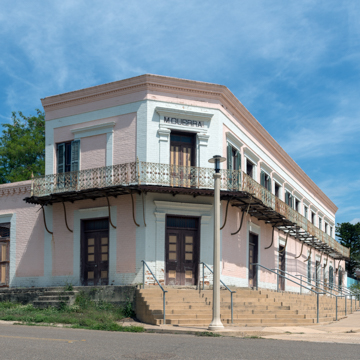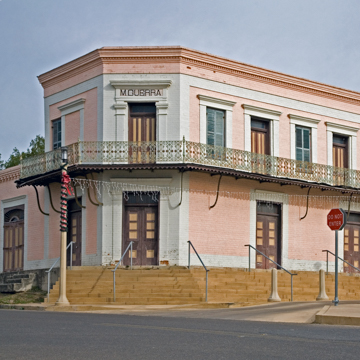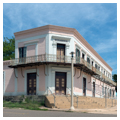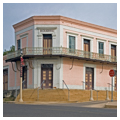Manuel Guerra, the legendary political and economic boss of Starr County, commissioned Portscheller to build his family compound. A native of Mier, Guerra printed his own currency to be redeemed by his ranch workers at his store. The two-story brick structure, rehabilitated in 1996 by the Texas Parks and Wildlife Department, sits assuredly along the upper western edge of the plaza, extending for half a block with fine classical brick detailing and a historic two-color metal balcony that delicately embellishes its second story. A one-story warehouse completes the L-shaped complex enclosing a courtyard with original outbuildings. Never to be outdone by competitors, the Guerra family also operated the first gas station in Roma with a pump installed near the chamfered corner entrance (since removed).
The use of decorative balconies by Portscheller eventually led owners of the older Cox, Palacios, and García Sáenz compounds in the 1890s to add iron balconies cast in St. Louis to the second stories of their buildings, thereby creating a fusion of northern Mexico and New Orleans architecture around the plaza.





